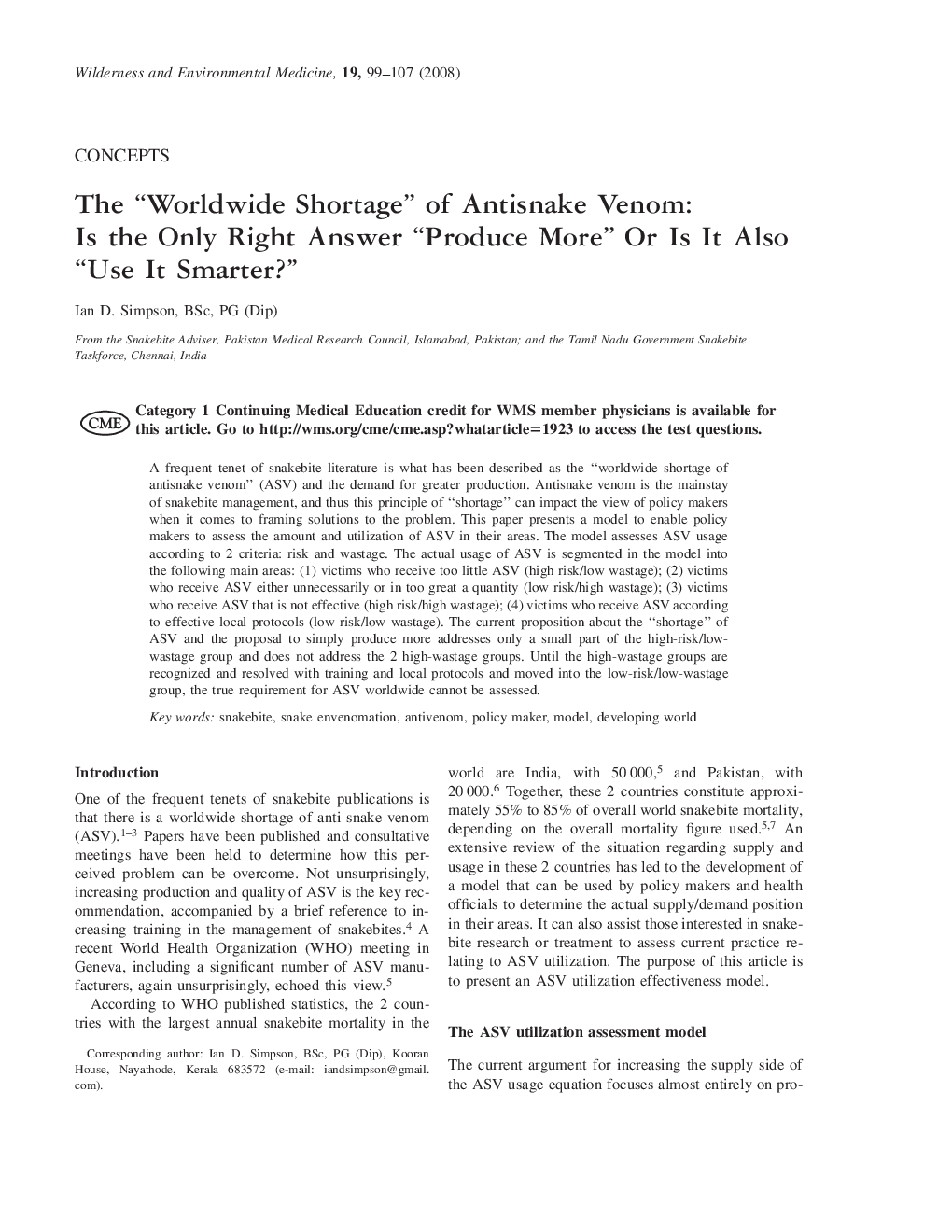| کد مقاله | کد نشریه | سال انتشار | مقاله انگلیسی | نسخه تمام متن |
|---|---|---|---|---|
| 2615215 | 1135078 | 2008 | 9 صفحه PDF | دانلود رایگان |

Category 1 Continuing Medical Education credit for WMS member physicians is available for this article. Go to http://wms.org/cme/cme.asp?whatarticle=1923 to access the test questionsA frequent tenet of snakebite literature is what has been described as the “worldwide shortage of antisnake venom” (ASV) and the demand for greater production. Antisnake venom is the mainstay of snakebite management, and thus this principle of “shortage” can impact the view of policy makers when it comes to framing solutions to the problem. This paper presents a model to enable policy makers to assess the amount and utilization of ASV in their areas. The model assesses ASV usage according to 2 criteria: risk and wastage. The actual usage of ASV is segmented in the model into the following main areas: (1) victims who receive too little ASV (high risk/low wastage); (2) victims who receive ASV either unnecessarily or in too great a quantity (low risk/high wastage); (3) victims who receive ASV that is not effective (high risk/high wastage); (4) victims who receive ASV according to effective local protocols (low risk/low wastage). The current proposition about the “shortage” of ASV and the proposal to simply produce more addresses only a small part of the high-risk/low-wastage group and does not address the 2 high-wastage groups. Until the high-wastage groups are recognized and resolved with training and local protocols and moved into the low-risk/low-wastage group, the true requirement for ASV worldwide cannot be assessed.
Journal: Wilderness & Environmental Medicine - Volume 19, Issue 2, June 2008, Pages 99–107